From Caravaggios, trattorias without menus, and passeggiatas along the seafront, here are the best things to see, eat and do in Napoli
Introducing a series of alternative city guides, specially curated for the cultivated traveller.
Naples is a city that deals in extremes. Locals gesticulate wildly on the streets, historical masterpieces are defaced by graffiti, contraband vendors shout their wares and cars seem to speed up rather than slow down when approaching pedestrians. The people here live largely and unapologetically – whether you hate it or love it is none of their business.
Perhaps this should come as no surprise for a city that exists under the spectre of danger. Beneath the watchful eye of Mount Vesuvius, everything in this Campanian capital is shaped by a dualistic relationship between life and death. Ancient tombs and expansive catacombs lie below, while resplendent churches and palazzos reign above. Adding to this is the presence of the Camorra mafia, whose influence remains intricately woven into the sociopolitical fabric of the city, casting a shadow over ongoing struggles for reform and stability.
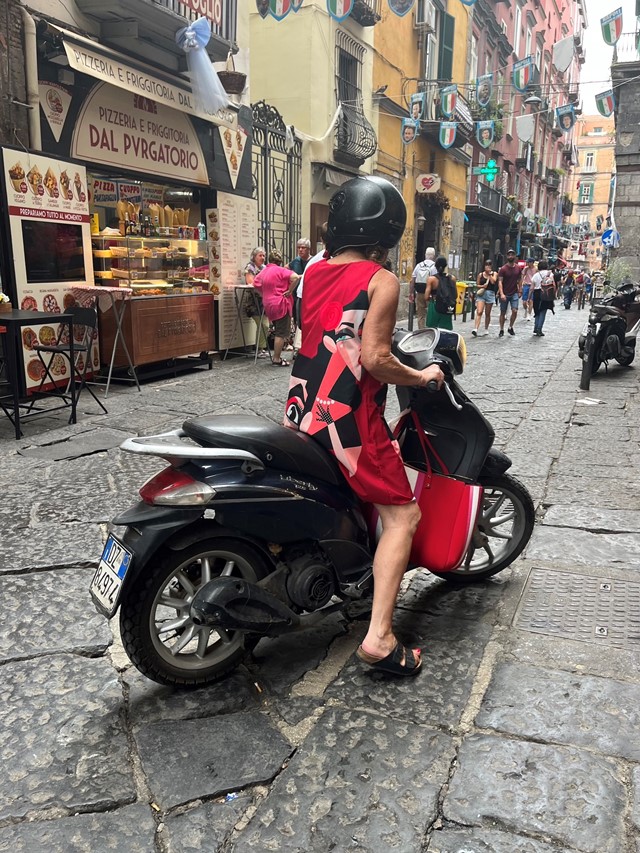
Nonetheless, Naples has been undergoing a cultural resurgence, partly driven by the success of writer Elena Ferrante’s Neapolitan Novels, photographer Sam Youkilis’ candid iPhone documentation of everyday Neapolitan life, and filmmaker Paolo Sorrentino’s poignant portrayals of his hometown. While systemic issues persist, the indomitable Neapolitan spirit prevails. Naples may lack the picture-postcard “la dolce vita” lifestyle of Capri and the spectacular cliffsides of Positano, but what sets it apart is a blatant disregard for what others think it should be, and a total embrace of what it is.
Below, you’ll find a list of recommendations that showcase the irresistible charm of Naples, an enduringly misunderstood city.
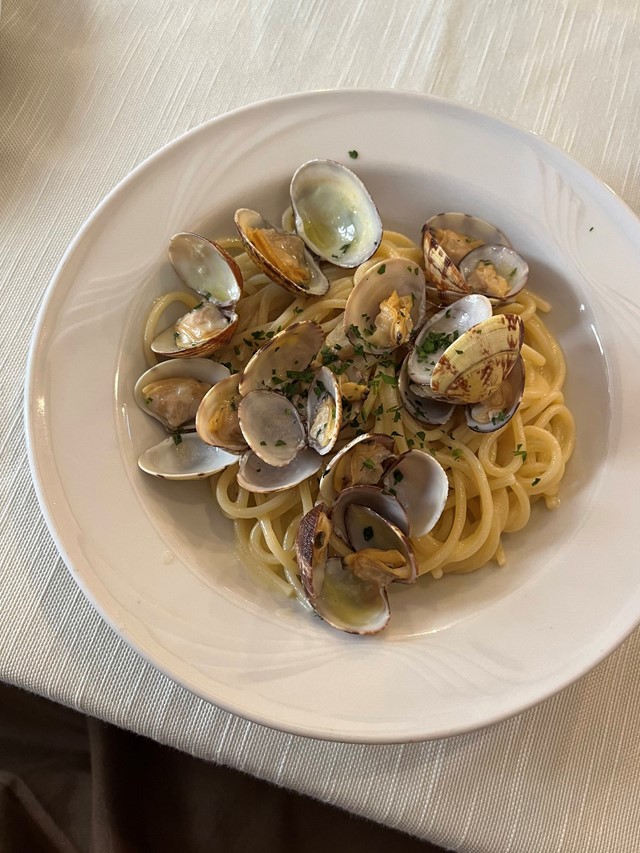
Trattoria da Ettore
A short wander away from the touristic hotspot of Piazza del Plebiscito lies an unassuming family-run eatery with just eight tables and a fading sign. At Trattoria da Ettore, there’s no fixed menu and the waiter breezily rattles off what’s available course-by-course. Expect the pinnacle of traditional Neapolitan cuisine, including spaghetti alle vongole (best in the business) and polpette al sugo (meatballs in tomato sauce). The atmosphere is special, with homey wood-beamed ceilings and vintage pots and pans adorning the walls. As you gaze into the sunlit kitchen, you feel like you’re being invited to an intimate dinner rather than paying for a meal. Open only four hours most days (1-3pm, and 8-10pm), a seat here is highly coveted so book in advance or arrive early.
Rione Sanità
Rione Sanità is a district born of contradiction. Originally built as a burial ground in the Greek and Roman period, it was later fashioned as a residence for noble families and wealthy bourgeois, before falling into disrepair at the hands of the mafia. Today, it’s gaining a reputation as one of the liveliest areas of the city, with locals chatting across balconies, scooters whizzing by frenetically and fireworks going off at all times of the day.
The best way to experience Rione Sanità is to walk until you stumble across a hidden gem, of which there are plenty. Obscured by the teeming fruit and vegetable market on Via dei Vergini is Palazzo dello Spagnolo, a rococo-style edifice built in the 1700s by architect Ferdinando Sanfelice. Visit in the evening, when the cascading staircase and rich stucco decorations are bathed in a golden light. At opposite ends of the district are also two of the most important museums in Naples: the Museum of Capodimonte, where you can admire Caravaggio’s Flagellation of Christ (1607), and the National Archaeological Museum of Naples, where excavations from Pompeii and Herculaneum are housed.
If you get hungry, there’s Isabella de Cham, run by an all-female team that serves up some of the best pizza fritta with fillings ranging from pesto and bechamel to sausage and provola. Nearby is Pasticceria Poppella, famous for its il fiocco di neve, a tiny cream pastry with powdered sugar that melts effortlessly on the tongue.
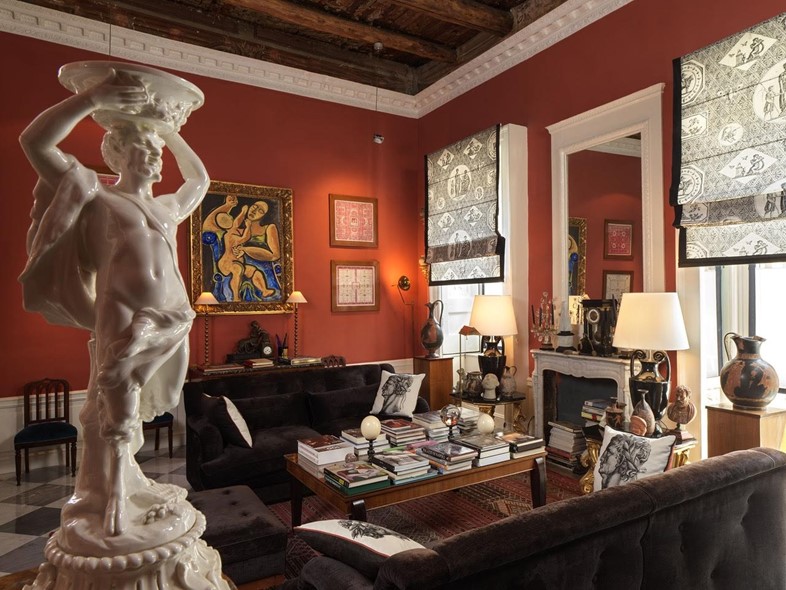
Casa d’Anna ai Cristallini
Located on the second floor of Palazzo Giannattasio is Casa d’Anna ai Cristallini, a Baroque mansion from the early 1500s restored as a charming, art-filled B&B. Upon walking into the grandiose salotto, you’re greeted with marble statues, velvet sofas and Italian opera wafting through the air. Consisting of five rooms, each is named after an island and boasts its own distinct personality. Procida features abundant wood panelling, painted ceiling flourishes and a tree-shaded terrace, creating an ideal retreat for a midday riposo. Meanwhile, Palmarola is the largest and newest room that enjoys a lovely balcony view and a sprawling bathroom clad in marble, complete with a bathtub, double sink and Ortigia toiletries. The highlight is undoubtedly the rooftop garden, where guests can enjoy a breakfast of fruit, yoghurt and pastries every morning.
While here, don’t miss a visit to the neighbouring archaeological site Ipogeo dei Cristallini (both owned and run by Alessandra Martuscelli), where four sepulchres tracing back to the 3rd and 4th centuries BC remain – one of which is still extraordinarily intact with vibrant frescoes and ancient artefacts.
Gran Caffè Gambrinus
Nicknamed the “city of coffee” across Italy, drinking coffee in Naples is an act both intrinsic and ritualistic. Make like the locals and order coffee standing at the bar or otherwise find a seat at Gran Caffè Gambrinus, a historical coffee house long regarded as the meeting point of the city’s intellectual, political and creative life. As it overlooks the Royal Palace of Naples, there’s bound to be crowds of tourists, but don’t let the queue put you off. The espresso con nocciola is exceptional and the lemon sorbet and sfogliatelle shaped like Vesuvius make truly delectable accompaniments for an afternoon of people-watching.

Churches of Centro Storico
Naples, otherwise known as “the city of 500 domes”, is home to the highest number of churches in the world. The beauty of venturing into the UNESCO-listed Centro Storico is that you can find one at just about every corner. If you’re short on time, prioritise Sansevero Chapel (albeit not technically a church), where Giuseppe Sanmartino’s sculpture The Veiled Christ (1753) proves a wonderful sight, with the diaphanous quality of the veil breathtakingly rendered in marble. Look up at Francesco Maria Russo’s 18th-century ceiling fresco Glory of Paradise, which has never been repainted or restored – maintaining its rich colour and detail over time.
There’s also Santa Maria delle Anime del Purgatorio ad Arco, built in 1638 to provide burial for the poor and unfortunate souls who couldn’t find space in the city’s overcrowded churches. Denied proper Catholic burials, these souls were believed to languish in purgatory before ascending to heaven. The living aided this journey by caring for their skulls and praying for them. Their remains are still contained in the church’s hypogeum today. Finish at Pio Monte della Misericordia, a quiet, octagonal church that proudly displays Caravaggio’s Seven Acts of Mercy (1607) above the high altar. Included in the ticket is admission to the picture gallery, where you can view the painting from above with hardly another visitor in sight.
Lia Rumma Gallery
Set at the fringes of the affluent Chiaia district, Lia Rumma Gallery was founded in 1971 to research and champion contemporary art movements such as Arte Povera, conceptual art and minimal art. Since then, it’s developed an impeccable roster of artists including Marina Abramović, Donald Judd and Anselm Kiefer, and expanded to a second location in Milan. A stone’s throw away from Villa Communale di Napoli and the Mediterranean Sea, the gallery space offers a peaceful yet enriching respite from the chaos of city life outside.
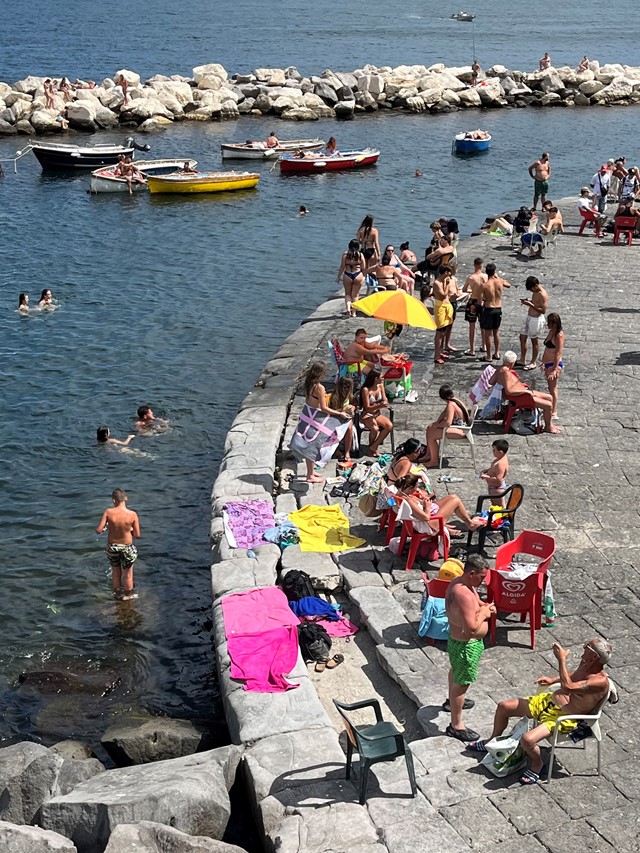
Lungomare
No trip to Naples is complete without a passeggiata along the seafront. Here, the tight, narrow alleyways of the city open up to 2.5km of deep blue waters and light-filled skies. On Sundays, locals gather in throngs, lazing on plastic chairs or floating face-up on small wooden boats – the smell of sweat, saltwater and sunbathing oil mingling as the colour of their skin turns impossibly bronze. Nearby, children squeal, chase each other and throw themselves headfirst into the water. Join in or have an aperitif at Hotel Excelsior, where the rooftop bar offers panoramic views over the Bay of Naples. Either way, everything is tinged with romance here. You’ll find yourself falling in love not just with Naples but with life itself.
Libreria Berisio
A staple of the Port’Alba city gate since 1956, Libreria Berisio is a bookshop by day and cocktail bar by night. Floor-to-ceiling bookshelves act as a cosy backdrop, while mellow jazz hums in the background and red mood lighting washes over the room. With an extensive yet reasonably priced cocktail list, it’s easy to spend a whole evening nestled in this low-key haunt. As the night goes on, the bar seems to become one with the city as seats spill onto the street, laughter reverberates in the dark and cigarette smoke drifts out the open doors.
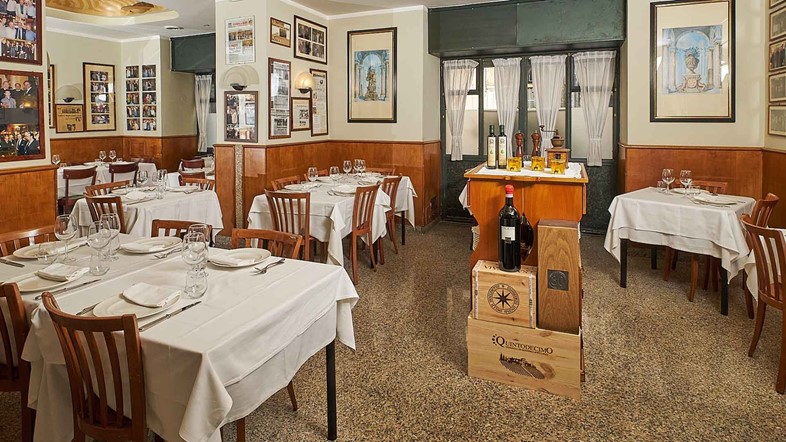
Mimì alla Ferrovia
One of the last restaurants in the neighbourhood by the Garibaldi train station, Mimì alla Ferrovia is the perfect way to end your Neapolitan sojourn. Since it opened its doors in 1943, it’s attracted a high-profile clientele that counts among them Federico Fellini, Pavarotti and of course, SSC Napoli’s fabled footballer Diego Maradona. What continues to make it unique is chef Salvatore Giugliano’s skilful balancing of deep-rooted family tradition with modern culinary exploration (octopus is paired with kimchi sauce and fried squid is served with wasabi mayo). If you’re looking for something more classic, the pasta alla Genovese and stuffed peppers shouldn’t be skipped. Despite all its success, the ambience inside remains relaxed and welcoming, encouraging you to give in to every indulgence.